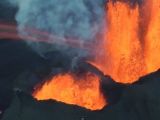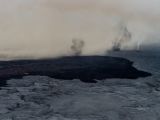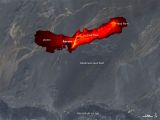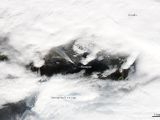Remember when Iceland's Bárðarbunga volcano erupted back in last year's August and sent fountains of lava some 200 feet (60 meters) high into the air? And gave rise to poisonous tornadoes and literally made Iceland grow bigger?
Well, as it turns out, this massive volcanic eruption also released loads of toxic sulfur dioxide gas. About 120,000 tonnes per day, a team of scientists detail in a new study in the Journal of Geophysical Research.
That's more than Europe's entire industry
This latest volcanic eruption in Iceland, the biggest to have happened in this corner of the world in more than 200 years, lasted for about 6 months.
It began with thousands of earthquakes rattling the Bárðarbunga volcanic system. Then, lava shot out from the ground. When at its most active, Bárðarbunga spewed out lava at a rate of over 200 cubic meters (about 7,000 cubic feet) per second.
Researchers say that, when the eruption finally subsided, the lava produced by it covered an area about the size of Manhattan. Pretty impressive, right?
Satellite data shows that, together with this lava, the Bárðarbunga volcanic eruption also produced about 3 times as much sulfur dioxide gas as Europe's entire industry. Apparently, it was while in its early days that the eruption was especially productive.
“In the beginning, the eruption emitted about 8 times more sulphur dioxide per day than is emitted from all man-made sources in Europe per day,” says University of Leeds researcher Anja Schmidt.
In 2010, man-made sulfur dioxide production, resulting from burning fossil fuels and other industrial processes such as smelting, was recorded at about 12,000 tonnes per day, EurekAlert informs.
The eruption took its toll on air quality
Studies carried out in recent years have linked emissions of sulfur dioxide gas with acid rain and respiratory problems. Seeing how much of this toxic compound was released during last year's Bárðarbunga eruption, it's pretty obvious air quality really took a hit.
“This eruption produced lava instead of ash, and so it didn't impact on flights - but it did affect air quality,” explains University of Edinburgh researcher John Stevenson.
Since other volcanic eruptions will most certainly happen here on Earth in the years to come, scientists are trying to figure out how it is exactly that toxic gases produced during such events spread. This should help predict the path of future poisonous clouds birthed by volcanoes.
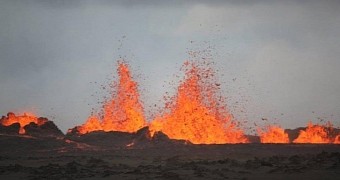
 14 DAY TRIAL //
14 DAY TRIAL // 
